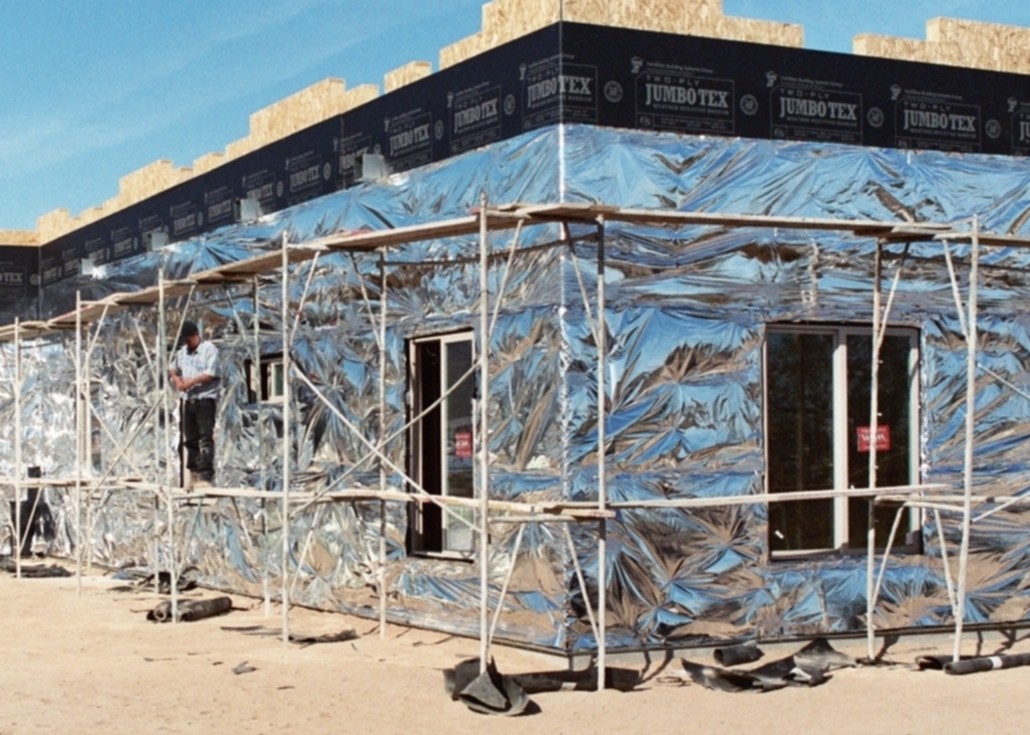
Radiant
Barrier Facts: Get Educated Before You Buy!
Horizon Energy Systems has
been involved in the design, testing, patenting and manufacturing of
Radiant Barrier Systems (RBS), since 1986. During this time there
have been many products labeled as a "radiant barrier" but most fall
short of the true description of this relatively new building
product.
In the content below I will attempt to explain what I've learned from
decades of research and hundreds of hours spent behind an infrared
camera watching heat move.
Below are terms describing the effects of radiation you may have never
heard before, the most important being "emissivity". Most home
builders, architects and engineers I've spoken with for the last 20
years have not been exposed to this type of information despite years
of university studies, myself included. It was only through
extensive research at libraries that I became aware how easily infrared
heat moves into and out of our homes.
Should you have any questions after reading
the information below regarding how our patented products can help you
lower rising energy costs and make your home more comfortable, and why
our products are superior to what is available currently, drop me an
email with your questions and I will attempt to answer them.
Brad Lindsay, Horizon Energy Systems
UNDERSTANDING HEAT
There are three methods heat moves: Conduction, Convection and
Radiation. While all three are understood and recognized, it is
my opinion only one method of heat flow needs to be controlled:
radiation. Conduction and convection are paths that heat can flow while
infrared radiation is a source of energy. All heat starts with
radiation. Control radiation and
energy wasting convection and conduction are diminished as well.
Infrared
radiation is an electromagnetic wave that travels effortlessly through
the air and changes into
convection and conduction once it strikes a surface.
Conduction and convection are excited molecules creating friction which
in turn allows heat to move. Put a pan on the stove full of
water, turn on the heat (gas or electric), and the metal pan will
conduct the heat from below into the water through conduction.
Convection is the movement of a fluid (air is a fluid), which is heated
and moves due to changing the density. A Lava Lamp is a great
tool for watching the movement of convected heat. The less dense
bubbles of color, heated by the light below, travel upwards through the
colder (more dense), clear liquid to the top. Once it cools off
and loses heat, the density increases and it falls back to the bottom
of the lamp to be heated again. Looking closer we find the source of heat is the radiation
from the light element blasting infrared heat from the bulb to the
glass container at 186,000 miles per second (the speed of light).
Put a true RBS between the
element and the jar and there will be no "lava lamp effect" as there
will be no movement of heat. But what is a "true RBS"?
To understand how
a radiant barrier works we need to look into the past where we
can find the inventor, Sir
James Dewar. Dewar was a pioneer in liquefying gasses which
required very low temperatures, close to absolute zero (minus 359
degrees Fahrenheit). Once liquefied, there was no method to store
these super low temperature liquids so Dewar invented what became
known later as the "Dewar's Flask". This flask was two glass
spheres, one inside the other each coated with silver which had a
vacuum between the two surfaces to eliminate connective losses.
The Dewar's flask later was marketed as a product we all grew up with
called the Thermos Bottle. Ever look inside a Thermos
bottle? It's very reflective and very high performance and can be
very effective for keeping coffee hot or ice tea from getting
warm. In short, keeps heat from moving into or out through the
shell.
Why does it works so well? A Thermos bottle has two reflective
surfaces facing each other without contact. This is a true radiant
barrier. To fully understand why this works you must first learn
what emissivity is and how it affects our energy bills, our comfort and
our lives.
Imagine for a moment, a home completely protected in a membrane that
mimics the performance of a Thermos bottle. It would require
very little energy to stay comfortable during the hottest days of
summer or the coldest winter nights as heat would be reflected at the
building shell.
UNDERSTANDING EMISSIVITY
Let's let Webster start with the definition:
Emissivity
explained in layman's terms
Webster's
definition:
Main
Entry: emis·siv·i·ty
Pronunciation: "e-m-i si-v-i tee
Function: noun
Inflected Form(s): plural -ties
Date: 1880
: the relative power of a surface to emit heat by radiation : the ratio
of
the radiant energy emitted by a surface to that emitted by a blackbody
at the same temperature
Ok,
in
layman's terms: Emissivity is the ability for radiant heat to
leave
the surface of an object. It matters not what the density,
mass or thickness of the object, only the surface. As can be seen
below in Fig 1.2, emissivity (E factor), plays a significant role
in how
heat
moves into or out of our homes, our cars, our bodies. The higher
the number, the faster infrared heat can emit from the surface.
Pay close attention to the values of all building materials.
Fig
1.2
EMISSIVITY OF VARIOUS COMMON MATERIALS
Material
Emissivity value
Gold, polished .03
Metalized Film Radiant Barrier .04
Silver, polished .04
Chrome .05
Aluminum, polished .04
oxidized .78
Brass, polished .04
oxidized .61
Iron, polished .21
oxidized .69
Copper, polished .05
oxidized .78
Human skin .98
EMISSIVITY
OF BUILDING MATERIALS
Wood .95
Glass .94
Paint, average of 16 colors .94
Brick, common red .93
Concrete .92
Plaster, rough coat .91
Source: Handbook of Chemistry


